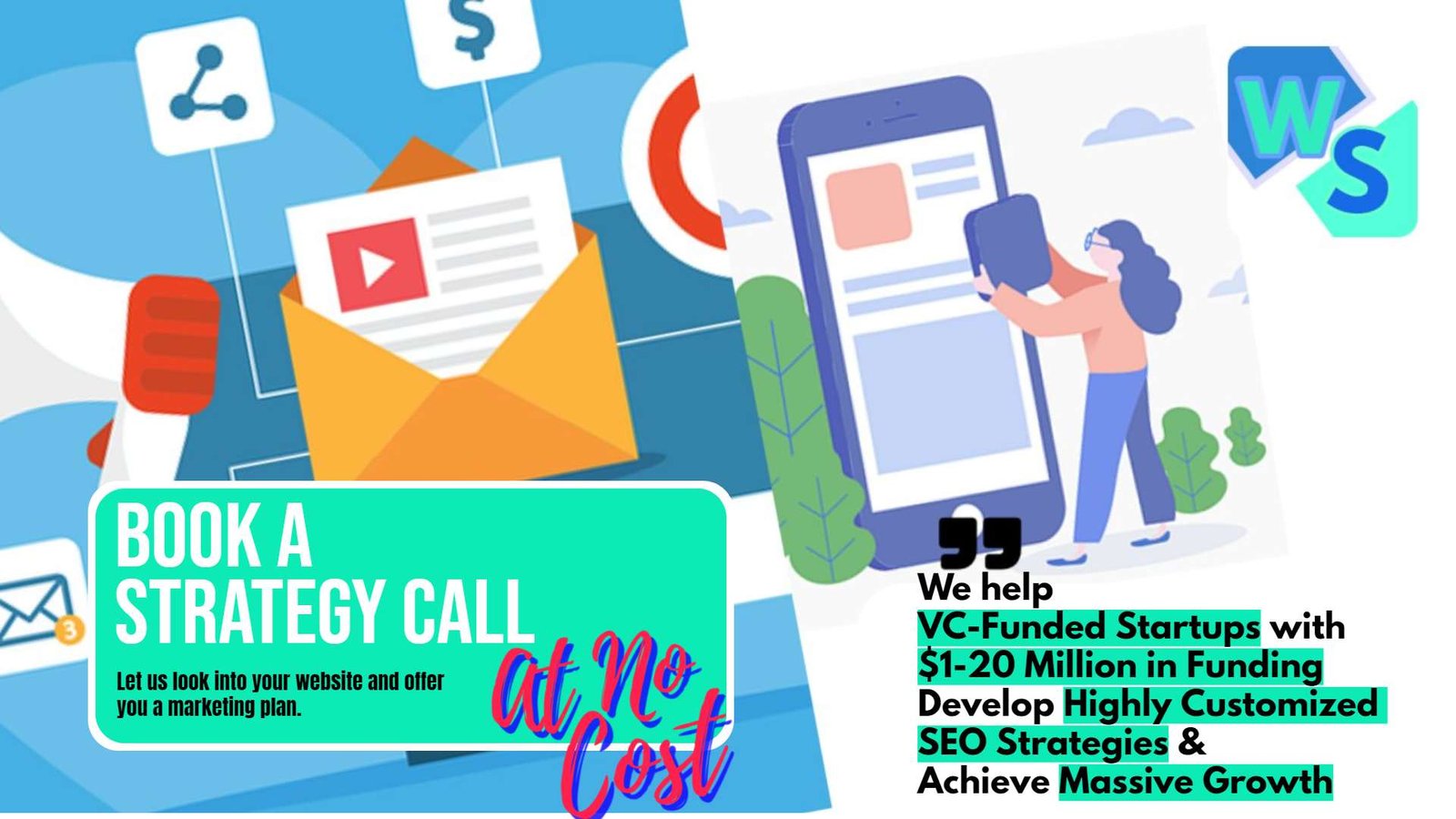In the world of digital marketing, influencer partnerships have become a staple for brands looking to expand their reach and connect with new audiences. But not every business can afford to work with big-name influencers, especially if you’re operating on a tight budget. That’s where micro-influencers come in. These are creators with smaller but highly engaged audiences who can help spread the word about your brand—without the hefty price tag. With a bit of strategy, building meaningful partnerships with micro-influencers is not only affordable but also incredibly effective for creating genuine brand connections.
In this article, we’ll break down how to establish impactful partnerships with micro-influencers even on a shoestring budget. We’ll explore tactics to identify the right influencers, ways to approach them, and strategies to maximize your partnership’s value.
Understanding Micro-Influencers: Why They’re Worth the Investment
What is a Micro-Influencer?
Micro-influencers are content creators with follower counts ranging from about 1,000 to 50,000. Unlike celebrities or mega-influencers, micro-influencers often have highly specific niches, allowing them to build strong relationships with their followers. Their smaller followings usually mean more engagement, making them valuable partners for brands looking for authentic connections.
Since micro-influencers typically operate in tight-knit communities, their recommendations feel more like genuine endorsements rather than advertisements. Followers tend to trust their opinions, which makes these influencers a cost-effective choice for brands aiming to increase brand awareness and credibility.
Why Micro-Influencers Are Ideal for Small Budgets
Partnering with micro-influencers is an accessible option because it generally costs less than working with larger influencers. Many micro-influencers are open to collaborations in exchange for products, discounts, or commission-based payment structures. This affordability makes it possible for smaller brands and startups to launch successful influencer campaigns without significant financial investment.
Another benefit is that micro-influencers can offer brands a level of niche targeting that larger influencers may not. They have deep connections with specific audiences—whether it’s fitness enthusiasts, eco-conscious consumers, or pet owners. By aligning with the right micro-influencers, you can tap into a relevant audience that’s genuinely interested in what your brand has to offer.
Step 1: Identifying the Right Micro-Influencers for Your Brand

To make the most of a shoestring budget, you need to focus on finding influencers who align well with your brand’s message, values, and audience. This process requires thoughtful research, but it’s crucial for ensuring your partnership achieves meaningful results.
Define Your Campaign Goals
Before searching for influencers, define your campaign goals. Are you looking to drive sales, increase brand awareness, or build credibility within a particular niche? Knowing your primary objective will help you determine the type of influencers you need. If you’re aiming to build awareness, look for influencers with high engagement rates. If you’re focused on sales, search for influencers known for driving conversion.
Once you know your goal, consider your target audience’s demographics, interests, and behaviors. Look for influencers who naturally appeal to this group and who post content that aligns with your brand’s aesthetic and values.
Use Social Media Tools to Find Potential Influencers
There are several ways to find influencers, but social media itself is one of the best tools. You can use Instagram’s search function, relevant hashtags, or keywords related to your industry. Alternatively, platforms like BuzzSumo, Upfluence, and NinjaOutreach can streamline the process by identifying influencers based on follower count, engagement, and niche.
When evaluating potential influencers, go beyond follower counts. Look at the quality of their content, the tone of their posts, and, most importantly, the level of engagement they receive. High engagement suggests a loyal audience that values the influencer’s opinions—a key factor in determining the partnership’s potential effectiveness.
Look for Authenticity and Consistent Engagement
Authenticity is crucial when working with micro-influencers, as their appeal lies in their real connections with followers. Scroll through their posts and take note of the tone and style of their captions, how they respond to comments, and whether they interact with their followers. This shows you how much trust they’ve built within their community and whether that engagement feels natural.
An engaged audience is more likely to respond positively to your brand, but avoid influencers who have overly promotional feeds. Look for those who share honest, thoughtful reviews and are selective about the brands they endorse. This kind of integrity reflects well on your brand and increases the likelihood of positive engagement.
Step 2: Approaching Micro-Influencers with a Compelling Offer
Once you’ve identified a list of potential micro-influencers, it’s time to reach out. The approach you take here can make or break the partnership, so be thoughtful, personalized, and transparent in your communication.
Craft a Personalized Message
When reaching out, start with a personalized message that demonstrates genuine interest in their work. Mention specific posts or qualities that stood out to you and explain why you believe your brand aligns well with their audience. Influencers receive many partnership requests, so personalization shows that you’ve done your research and are genuinely interested in collaborating.
In your message, be clear about what you’re offering and what you hope to achieve through the partnership. This transparency builds trust and gives the influencer a sense of what working with you would look like. Remember, influencers are often selective about who they partner with, so demonstrating that your brand genuinely aligns with their values is key.
Offer Value Beyond Monetary Compensation
Many micro-influencers are open to working with brands for non-monetary compensation, especially if they feel there’s genuine value in the partnership. Product exchanges, exclusive discount codes, or access to events are just a few ways to create value beyond cash. If your budget is limited, focus on creating an experience that’s mutually beneficial.
For example, if you’re a skincare brand, offer the influencer a customized skincare kit with exclusive products they can share with their followers. Or, if you’re a fitness brand, invite them to an online class or a one-on-one consultation. Experiences and thoughtful gestures can make your brand stand out and encourage influencers to promote it authentically.
Make It Easy for Influencers to Say Yes
Influencers are more likely to partner with you if you make the collaboration process as straightforward as possible. Provide clear guidelines on what you’re looking for, including the type of content, any messaging requirements, and deadlines. Keep in mind, however, that flexibility is also essential—allow influencers the freedom to interpret your guidelines in a way that resonates with their audience.
Offering a clear yet flexible proposal, along with resources like high-resolution images, product descriptions, or background information on your brand, shows professionalism and simplifies the influencer’s work. When your proposal is easy to understand and execute, influencers are more likely to be enthusiastic about the partnership.
Step 3: Structuring a Cost-Effective Partnership

When working with a limited budget, creativity in structuring your partnership is essential. Explore various ways to maximize your collaboration’s impact without stretching your finances.
Use a Commission-Based Structure
One cost-effective model for working with influencers is a commission-based structure. Instead of a flat fee, offer a percentage of each sale that the influencer drives through their unique referral link or discount code. This approach reduces upfront costs and allows the influencer to earn more as they generate more sales, making it a win-win situation.
A commission-based structure works especially well if your goal is to drive conversions. By providing influencers with a personalized link or discount code, you also gain the added benefit of tracking the results of each partnership, helping you measure the effectiveness of the campaign and make data-driven adjustments as needed.
Implement a Gifting Strategy
Gifting products to influencers in exchange for honest reviews or shout-outs is another budget-friendly strategy. When gifting, focus on building long-term relationships rather than expecting immediate returns. Send them products that genuinely align with their interests and encourage them to share their experience if they enjoy the product.
This approach is less direct than a paid campaign, but it allows influencers to share your products with authenticity, which often resonates well with their audience. When done thoughtfully, gifting can be the beginning of a long-term partnership, especially if influencers genuinely connect with your brand and are eager to continue promoting it.
Offer Content Creation Opportunities
Micro-influencers are often excellent content creators who bring a unique, authentic perspective to their posts. Leverage this by encouraging them to create content for your brand that you can also share on your own channels. This can include product reviews, tutorials, or lifestyle photos featuring your product.
By partnering with influencers to create content, you not only get high-quality visuals for your social media but also gain a fresh take on your product from someone with a close connection to their audience. Make sure to ask for permission to repurpose their content and give them credit when sharing—it’s a mutually beneficial way to expand your brand’s reach and build credibility.

Related: Check out our free tools:

Step 4: Maximizing the Impact of Your Influencer Partnership
Once your partnership is underway, focus on maximizing its impact. You can increase reach, engagement, and long-term benefits with a few strategic actions.
Cross-Promote on Your Own Channels
When influencers post content about your brand, share it on your own social media, website, or even email newsletters. Cross-promotion amplifies the content’s reach and builds social proof by showing your audience that real people are using and loving your products. Highlighting influencer content on your brand’s channels also reinforces the partnership and encourages followers to check out the influencer’s page, creating a two-way traffic flow.
Cross-promotion not only boosts the influencer’s visibility but also strengthens your brand’s image. When potential customers see genuine testimonials and product usage from a trusted figure, they’re more likely to feel confident about trying your product.
Track and Analyze Partnership Performance
After the campaign, it’s crucial to evaluate its effectiveness. Tracking metrics like engagement, reach, referral link clicks, and conversions will help you measure the impact of the collaboration. If you used discount codes, look at how many sales were generated directly from the influencer’s audience. For campaigns focused on awareness, assess engagement metrics to gauge interest.
Analyzing these results provides insights into which types of content, influencers, or campaign structures were most successful, allowing you to refine future partnerships. You’ll gain a clearer understanding of what resonates with your target audience and where to invest your limited budget next time.
Cultivate Long-Term Relationships
Building long-term relationships with micro-influencers can lead to authentic brand advocacy. Rather than treating partnerships as one-off campaigns, consider nurturing influencers who consistently resonate with your audience. Over time, they can become trusted brand ambassadors who bring ongoing value to your brand.
Stay in touch, engage with their content, and express appreciation for their work. When influencers feel valued, they’re more likely to continue supporting your brand, even when you don’t have an active campaign. Long-term relationships strengthen the influencer’s connection to your brand, making their endorsements feel natural and genuine.
Tips for Scaling Your Micro-Influencer Strategy on a Budget

When your initial micro-influencer partnerships start delivering results, you might wonder how to scale this strategy further without increasing your budget significantly. By focusing on sustainable, scalable tactics, you can extend your reach while keeping costs manageable.
Leverage Influencer Referrals to Find New Partners
A highly effective way to scale your micro-influencer strategy is by leveraging referrals from influencers you’re already working with. If they know other influencers in their niche who would be a good fit, ask if they’d be willing to introduce you. This warm introduction can make it easier to establish trust with new influencers, and it also allows you to tap into a similar audience segment, building on your existing brand awareness.
Influencer referrals not only simplify the discovery process but also help maintain a consistent quality of partnerships, as influencers often introduce like-minded creators who share similar values and audiences.
Combine Influencer Content with Other Marketing Channels
Content created by micro-influencers is often unique, relatable, and highly engaging. Don’t limit its reach to just the influencer’s platform—consider integrating this content into other parts of your marketing. Repurpose influencer content for your email newsletters, blog posts, or even on your website’s testimonials section. By showcasing influencer-created content on multiple channels, you can amplify its impact and ensure that it reaches a wider audience.
Additionally, this multi-channel approach enhances credibility, as potential customers see genuine endorsements on different touchpoints. When followers see influencers talking about your product on social media and then encounter the same influencer’s testimonial in an email or on your website, it strengthens their trust in your brand.
Experiment with Group Campaigns for Broader Impact
Group campaigns involve working with a small group of influencers on a collaborative project. This could include organizing a campaign where each influencer provides a unique take on your product or service, creating a series of related posts that build momentum over a set period. For example, if you’re launching a new collection, each influencer could showcase a different item and share their thoughts, creating buzz and anticipation.
Group campaigns have the added benefit of creating cross-engagement, as each influencer’s followers may check out the other influencers participating in the campaign. This collaborative approach also allows you to create a cohesive campaign theme that connects influencers’ unique voices, adding depth to your marketing efforts without significantly increasing costs.
Measuring Success and Refining Your Approach

To get the most value from your micro-influencer partnerships, it’s essential to measure their effectiveness and refine your approach based on data. By tracking key metrics, you can better understand what’s working and make informed decisions for future collaborations.
Track Engagement and Conversion Metrics
Engagement metrics, such as likes, comments, shares, and saves, give you insight into how well an influencer’s content resonates with their audience. High engagement suggests that the influencer’s followers find the content relevant and valuable, which increases the likelihood that they’ll check out your brand. However, while engagement is important, conversion metrics—such as referral link clicks, discount code redemptions, or website visits—offer a clearer picture of the campaign’s direct impact on your brand.
If the goal of your campaign is awareness, focus on engagement and reach metrics. If the goal is sales or leads, monitor conversion metrics closely to determine which influencers drive the most conversions. This helps you identify the most effective influencers to work with in future campaigns, maximizing your return on investment.
Collect Feedback from Influencers and Audiences
After a campaign ends, take time to gather feedback from the influencers you worked with. Ask about their experience, what they liked about the partnership, and any suggestions they have for improvement. This feedback can be incredibly valuable for optimizing future collaborations and ensuring a smooth experience for your partners.
Similarly, monitor any feedback from your audience regarding the influencer campaign. Did they comment on how much they liked a particular influencer’s take on your product? Did they mention any other products or features they’d like to see? Listening to this feedback provides you with deeper insights into what resonates with your audience, allowing you to refine both your influencer approach and overall product messaging.
Optimize Based on Data and Refine Your Strategy
Scaling micro-influencer partnerships isn’t just about working with more influencers—it’s about continuously refining your approach based on data. Review each campaign’s results and compare the effectiveness of different influencers, content formats, and engagement strategies. Identify any patterns or trends, such as specific influencers driving higher conversion rates or certain types of posts performing better.
Use these insights to refine your targeting criteria, adjust your messaging, and improve your outreach approach. For example, if you find that influencers with a particular tone or content style perform best, prioritize those qualities when searching for new partners. Over time, your influencer marketing strategy will become more efficient and impactful, helping you achieve even greater results on a limited budget.
Final Thoughts: Building Strong Partnerships on a Small Budget
Working with micro-influencers is one of the most effective ways to market your brand on a budget. By carefully selecting the right partners, crafting personalized proposals, and maximizing each partnership’s impact, you can create meaningful campaigns without overspending. Micro-influencers offer the authenticity, niche targeting, and engagement that many brands need to grow organically.
With a thoughtful approach, these partnerships can help you reach the right audience, build brand credibility, and foster genuine connections. Focus on creating value for both your brand and the influencers you work with, and you’ll find that micro-influencer partnerships can be an incredibly powerful tool for cost-effective growth.
READ NEXT:
- Are Vanity Metrics Killing Your Marketing Efficiency? Here’s What to Track Instead
- Pinpointing Digital Marketing ROI: Why Your Metrics Aren’t Telling the Full Story
- Unlocking Real ROI in Digital Marketing: The Hidden Costs Draining Your Budget
- How Misaligned Marketing Funnels Are Blocking Your ROI Potential
- Best Digital Marketing Agency In Santa Ana, California
- Best Digital Marketing Agency In San Francisco, California





















